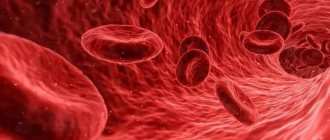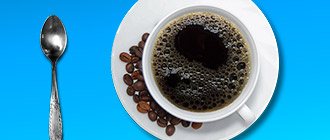Home » Nutrition » Can I eat oats and oatmeal if I have diabetes?
FoodProducts
20.02.2017
64524 Views
Oatmeal is a healthy and tasty breakfast for a great start to the day.
Oatmeal is low in calories and rich in fiber, making it an ideal meal for people watching their weight.
However, it contains a large amount of carbohydrates. For this reason, people suffering from diabetes may doubt the usefulness of this cereal specifically for them.
In this article we will tell you what oatmeal is and whether it is suitable for diabetics. The answer may surprise you a little.
Highly nutritious oatmeal
Oatmeal, or oatmeal as it is often called, is prepared from oatmeal. Oatmeal is oat grains from which the outer hard shell has been removed.
There are three main types of oatmeal: whole oatmeal, oatmeal, and instant oatmeal. These types differ in the production method, degree of flattening and cooking time. Whole grains are the least processed, but also take significantly longer to prepare.
Most people prefer oatmeal hot. Most often it is boiled in water or milk. But you can prepare oatmeal without cooking, just pour milk or water over the cereal and leave it overnight, and in the morning a healthy breakfast will be ready.
Regardless of how you prepare it, oatmeal is a good source of carbohydrates and soluble fiber. It also contains a number of vitamins and minerals.
For most people, oatmeal is a highly nutritious and balanced choice. Half a cup (78 grams) of dry oatmeal contains the following nutrients:
- Calories: 303;
- Carbohydrates: 51 grams;
- Proteins: 13 grams;
- Fiber: 8 grams;
- Fat: 5.5 grams;
- Manganese: 191% of the recommended daily intake (RDI);
- Phosphorus: 41% of RDI;
- Vitamin B1 (thiamine): 39% of the RDI;
- Magnesium: 34% of RDI;
- Copper: 24% of RDI;
- Iron: 20% of RDI;
- Zinc: 20% of RDI;
- Folic acid salt: 11% of the RDI;
- Vitamin B5 (pantothenic acid): 10% of the RDI.
As you can see, oatmeal is not only low in calories, but also rich in a variety of nutrients.
However, oatmeal is high in carbohydrates. And if you cook it with milk, the carbohydrate content will increase significantly.
For example, by adding ½ cup of whole milk to a serving of cereal, you increase the calorie content of the dish by 73 calories and add another 13 grams of carbohydrates.
Conclusion: Oatmeal is a highly nutritious food, high in carbohydrates, fiber and a number of vitamins and minerals.
Oatmeal Recipes for Diabetics
If you find it difficult to choose a healthy recipe, study the information below. This way you can choose the most suitable use option.
Find out also about losing weight with oatmeal jelly.
Decoction
To prepare it, you need to steam or boil 150 g of grain. The finished product must be crushed using a blender and poured with 1 liter of hot water. Boil for 40 minutes, strain and leave to cool. The finished decoction is consumed 100-150 ml before meals.
Porridge on the water
Take 1 cup of grain or flakes and add 2 cups of water. Bring to a boil and cook, stirring regularly, for 10–15 minutes. After this time, add 1 tbsp. l. vegetable oil, mix thoroughly and leave to brew under a closed lid on the stove off for 5 minutes.
Did you know? The state of Vermont (USA) ranks first in the country in the production and consumption of oats per capita. The locals got this love for grain from their ancestors, who were the first European settlers, originally from Scotland.
Kissel
The process of preparing the drink is not simple. You need to fill a three-liter jar with cereal and pour in 2.5 liters of kefir. Everything must be mixed thoroughly and left under the lid in a dark, warm place for a day. Then strain through double gauze, rinse the grains in 2 liters of water, and leave in the jar without liquid for another day. During this time, the substance should be divided into liquid and solid parts.
Drain as much liquid as possible. A quarter glass of sediment should be diluted with a small amount of water and combined with a glass of boiling water. Mix everything and boil. The finished drug should be consumed in small sips throughout the day.
Oatmeal, as a dietary product, must be present in the diet of a diabetic. In reasonable quantities, it not only improves digestion, but also reduces glucose levels.
How Carbohydrates Affect Blood Sugar Levels
Oatmeal is 67% carbohydrates.
This may be a concern for people with diabetes, as carbohydrates raise blood sugar levels.
Normally, when blood sugar levels rise, the body responds by producing the hormone insulin.
Insulin tells the body to remove sugar from the blood and cells and use it for energy or storage.
The body of people with diabetes is not able to produce the required amount of insulin on its own. Or there are cells in their body whose response to insulin differs from the norm. When such people consume too many carbohydrates, their blood sugar levels can rise well above healthy levels.
This is why it is important for people with diabetes to minimize spikes in blood sugar levels.
Careful control of your blood sugar levels helps reduce the risk of complications associated with diabetes, such as heart disease, nerve damage, and eye damage.
Conclusion: Oatmeal contains a large amount of carbohydrates.
This is a problem for people with diabetes because carbohydrates cause blood sugar levels to rise.
Features of the lifestyle of diabetics
Proper lifestyle management in general, dietary changes and dosed exercises allow you to take control of blood glucose concentrations, preventing its serious fluctuations - hypo- and hyperglycemia.
Taking into account all the contraindications for type 1 or 2 diabetes, rationally combining medications, insulin injections with food and drink, and rational exercise, you can reduce the risks of serious complications of the disease, including damage to the kidneys, eyes, cardiovascular system, peripheral nerves and feet.
Initially, it may seem that leading a healthy lifestyle with diabetes is difficult, but in reality, the changes have a very positive effect on the condition, it is not difficult to comply with them, and there are not many real prohibitions and contraindications to certain foods, drinks and actions for diabetes.
A rational diet and regular dosed physical activity as part of a healthy lifestyle for diabetes help:
- maintain stable sugar levels;
- control blood pressure, cholesterol and other plasma lipid concentrations within target parameters;
- reduce body weight and maintain it in a healthy range;
- completely prevent or seriously reduce the risks of complications of the disease.
This allows you to lead a normal life, not suffer from poor health, and have more strength and energy.
Fiber helps regulate blood sugar spikes
Oatmeal is rich in carbohydrates, but it is also high in fiber, which helps control blood sugar levels.
Fiber helps reduce the rate at which carbohydrates are absorbed into the blood.
If you're wondering which type of carbohydrate is best for controlling your blood sugar, pay attention to those carbohydrates that are absorbed into the bloodstream at the slowest rate.
To determine the carbohydrates that have the least impact on your blood sugar levels, use the glycemic index (GI) table of foods.
The classification in this table is based on how quickly a particular product increases blood sugar levels:
- Low GI: values: 55 and below;
- Average GI: 56-69;
- High GI: 70-100.
Carbohydrates with a low GI are absorbed into the blood more slowly and are more suitable for people with diabetes. All this is due to the fact that such products saturate the body with useful substances without causing significant jumps in blood sugar levels.
Oatmeal made from whole oats and Hercules is considered a low to medium GI product (50 to 58).
However, it is important to remember that different types of oatmeal differ in their nutritional properties.
Instant oatmeal has a higher GI (about 65), which means that carbohydrates are absorbed into the bloodstream faster and are more likely to cause blood sugar spikes.
Conclusion: The higher the fiber content in oatmeal, the slower the absorption of nutrients into the blood, which reduces the risk of a sharp jump in sugar levels.
Oatmeal selection
The following cereal products are popular today:
- cereals - contain many nutrients and have a low GI;
- whole grains are the healthiest option, as they are practically unprocessed, but they do take several hours to cook;
- muesli - steamed flakes, ready to eat (only with kefir);
- bars - 2-3 pcs. can replace a portion of porridge, good for snacking;
- bran - if you don’t like porridge, then 1-3 tsp. per day, with regular use, glucose levels are normalized;
- Instant cereal is the most harmful option for diabetics due to various additives.
Oatmeal helps control blood sugar levels
Some studies have shown that regularly consuming oatmeal helps control blood sugar levels.
The average of 14 studies showed that people who added oatmeal reduced their blood sugar levels by 7 mg/dL (0.39 mmol/L) and their HbA1c by 0.42%.
This is thought to be caused by oatmeal containing beta-glucan, a type of soluble fiber.
This type of fiber absorbs water in the intestines and forms a thick, gel-like mass.
Some studies have shown that it may help slow the rate at which the body digests and absorbs carbohydrates, leading to improved blood sugar control.
Recent studies have shown that the beta-glucan found in oatmeal helps effectively control blood sugar levels in people with type 2 diabetes. It reduces blood sugar by an average of 9.36 mg/dL (0.52 mmol/L) and HbA1c by 0.21%.
A number of other studies have shown that consuming foods containing beta-glucan helps reduce insulin resistance in people with type 2 diabetes.
However, the results are mixed, as several other studies have found that oatmeal has no effect on the body's insulin resistance.
Overall, studies on the effects of oatmeal on people with type 2 diabetes have found that oatmeal improves blood sugar and insulin control.
However, the effect of oatmeal on patients with type 1 diabetes has been little studied.
Conclusion: Oatmeal helps lower blood sugar and improves blood sugar control in people with type 2 diabetes.
Restrictions for diabetes: foods and drinks
There are a number of foods or certain drinks that should be sharply limited in the diet or completely eliminated. These include fatty foods rich in animal, saturated and trans fats. It is also important to reduce foods that contain a lot of salt, sugar (sweets, sweet pastries), soda and boxed juices, sports energy drinks. It is useful to drink plain water instead of sweet drinks, and use sweeteners when drinking coffee or tea. It is worth sharply reducing the amount of alcohol or completely abandoning it - it provokes sharp fluctuations in blood sugar.
Other benefits of oatmeal
Oatmeal is good for health.
Improving blood lipid composition
Some studies have linked oatmeal consumption to lower total and bad cholesterol levels. On average, this amounts to a moderate decrease of about 9-11 mg/dL (0.25-0.30 mmol/L).
Researchers attribute this effect to the high levels of beta-glucan in oatmeal. They believe it helps the body lower cholesterol levels in two ways.
First, the rate of digestion slows down and the amount of fat and cholesterol absorbed from the intestines decreases.
Second, beta-glucan is known to bind to cholesterol-rich bile acids in the intestine. This prevents the body from absorbing and processing these acids. They simply leave the body along with the stool.
Since high cholesterol increases your risk of heart disease, eating oatmeal can help reduce your risk.
Improved weight control
Oatmeal is great for losing weight. One reason is that oatmeal keeps you feeling full for a long time and reduces the likelihood of overeating.
The high levels of beta-glucan in oatmeal are thought to keep you feeling full longer.
Since beta-gluca is a soluble fiber, it forms a thick, gel-like substance in the stomach. This helps slow down the rate at which food leaves the gastrointestinal tract and keeps you feeling full for a longer time.
In addition, oatmeal is low in calories and rich in nutrients. That is why it is perfect for those losing weight and those who monitor their health.
Improved gastrointestinal health
Oatmeal is loaded with prebiotic soluble fiber, which has the potential to improve the balance of beneficial bacteria in the gastrointestinal tract.
One study found that oatmeal could change the balance of gut bacteria.
However, larger studies are needed to confirm these findings regarding the gastrointestinal health benefits of oatmeal.
Conclusion: Oatmeal has a beneficial effect on health. It helps improve blood lipids and helps control body weight.
Kiseli
jelly Every Day in your diet for diabetes .
Kissel Every Day Immune - contains unique natural ingredients to strengthen the immune system.
Kissel Every Day Relax – it contains ingredients that improve metabolism and normalize the functioning of the nervous system.
Kissel Kissel EVERYDAY DETOX with a cleansing complex contains ingredients that help speed up metabolism, quickly and safely cleanse the body and lose weight.
| Kissel Every Day Immune with strengthening complex | Kissel Every Day Relax with a calming complex | Kissel Kissel EVERYDAY DETOX with cleansing complex |
You can buy oatmeal and jelly Every Day and any other APL products in our online store. Place your order online or call the indicated phone numbers. Delivery is carried out to all regions of Russia.
Should people with diabetes eat oatmeal?
Is it possible to have oatmeal if you have diabetes or should you not include oats in your diet?
Oatmeal is a healthy product that many people with diabetes should include in their diet.
It is best to opt for whole grains and oatmeal, as these types of oatmeal are low GI and do not contain added sugar.
However, if you have diabetes, there are a number of factors to consider before including oatmeal in your diet.
First, watch your portion sizes. Despite the fact that oatmeal has a low GI, eating too much oatmeal if you have diabetes can lead to what is called a glycemic load.
Glycemic load is an estimate of how much a certain portion of a particular food will raise your blood sugar levels after you eat that food.
For example, a standard serving of oatmeal is approximately 250 grams. The glycemic index of such a dish will be 9, which is quite low.
However, if you double the serving, the GI will double accordingly.
In addition, it is important to remember that each body's reaction to carbohydrates and the subsequent increase in blood sugar levels is highly individual. This means that it is important to monitor your blood sugar levels and determine your individual body's response rate.
Also, keep in mind that oatmeal is not suitable for you if you are on a low-carb diet.
Conclusion: Oatmeal has a number of benefits for people with type 2 diabetes, but is not suitable for those on a low-carb diet. Remember to control portion sizes and monitor your blood sugar levels.
Nutrition for diabetes
Many are concerned about possible prohibitions and contraindications for consuming certain foods for type 1 or type 2 diabetes. But approaches to nutrition have undergone significant changes over the past 20-30 years, and many of your favorite foods can be eaten, but done less often and in small portions. The basis of nutrition for this pathology is healthy, whole and varied foods containing as few light carbohydrates as possible. The diet is selected individually for each patient, taking into account his preferences and characteristics of the disease.
Among the recommended product groups, certain selection features can be emphasized:
- Non-starchy vegetables - tomatoes, carrots, different varieties of cabbage, peppers, herbs. Starchy vegetables such as peas, potatoes, and corn can be added to the diet in smaller quantities.
- Healthy fruits, even sweet ones, since in addition to sugar they contain fiber, which slows down its absorption.
- Half of the grain diet per day should include whole grains. Processed grains and flour products need to be reduced.
- It is important to consume enough protein - meat, fish, poultry, dairy products.
- The diet should include eggs, nuts, seeds, and legumes.
- Products containing unsaturated fats are beneficial for the cardiovascular system. These are vegetable oils, seeds and nuts, sea fatty fish, avocados. When preparing food, you should avoid frying with butter, lard, margarine, and reduce sour cream and cream to a minimum.











